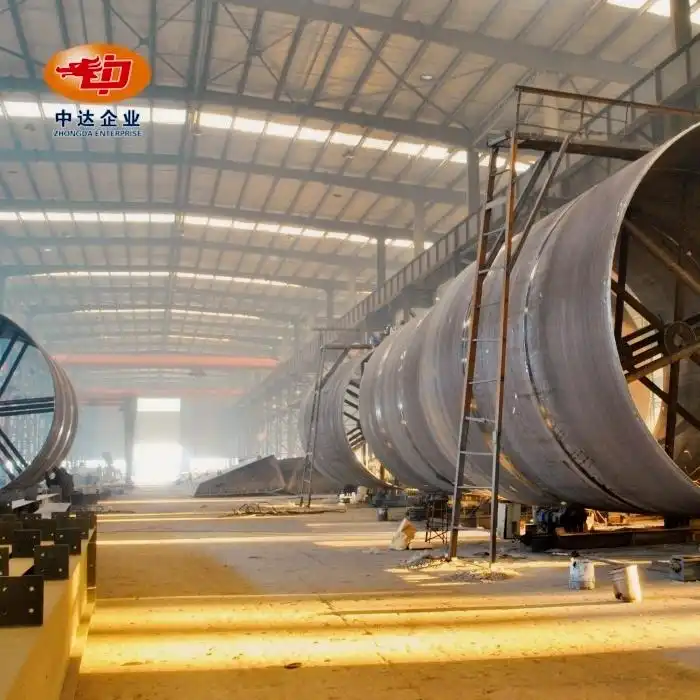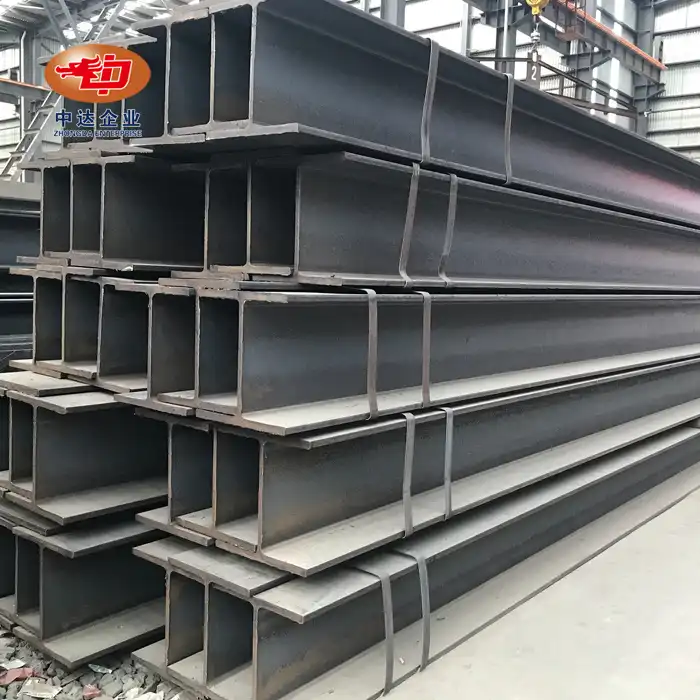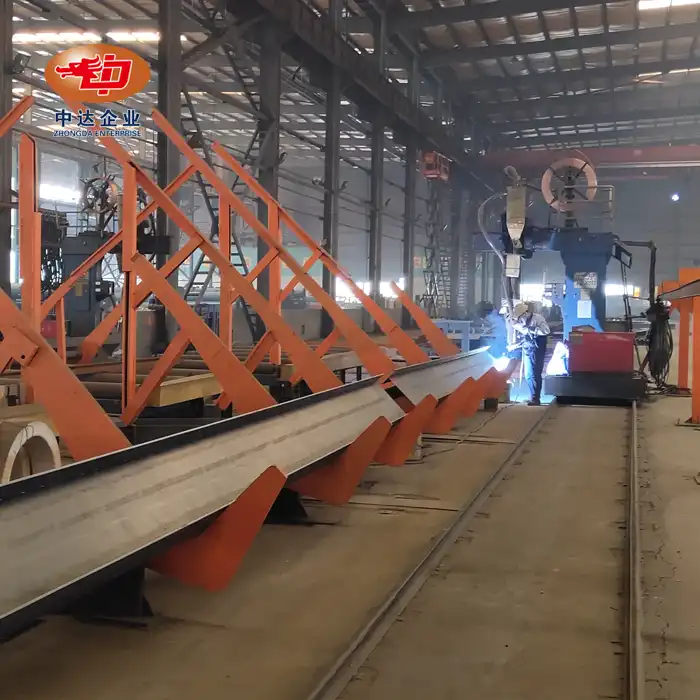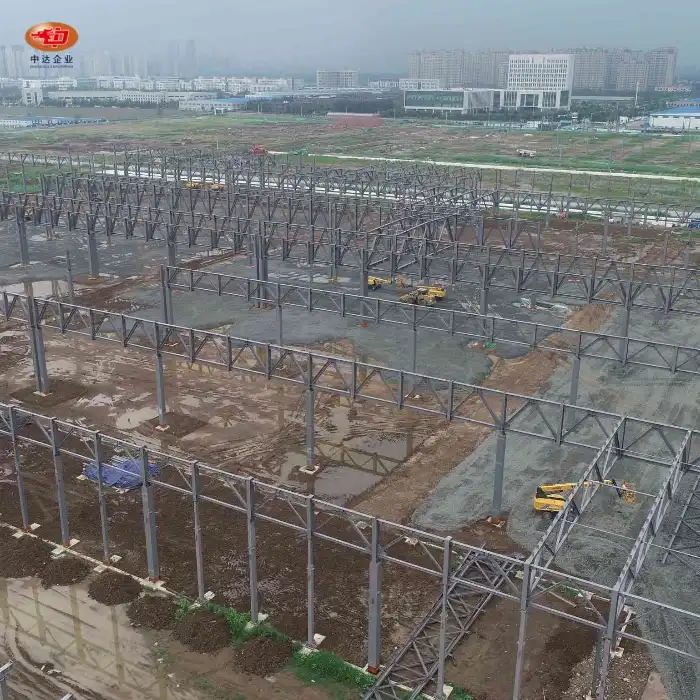
Materials Used in Highway Steel Sound Barrier Construction
Highway steel structure sound barriers are essential components in modern infrastructure, designed to mitigate noise pollution along busy roadways. These barriers utilize a combination of carefully selected materials to achieve optimal sound absorption and durability. At Zhongda Steel, we specialize in manufacturing high-quality steel sound barriers that incorporate innovative composite structures. Our products feature a 2mm galvanized steel outer layer with 23-30% perforation and a high-density centrifugal glass wool inner layer, achieving a noise reduction coefficient (NRC) of up to 0.81. This blog explores the key materials used in highway steel sound barrier construction and their unique properties.
Core Materials for Effective Sound Absorption
Galvanized Steel: The Protective Outer Layer
Galvanized steel forms the primary structural component of highway sound barriers. This material is chosen for its exceptional strength, durability, and corrosion resistance. The galvanization process involves coating steel with a protective layer of zinc, which shields the underlying metal from environmental factors such as moisture and air pollution. In sound barrier applications, the steel panels are typically 2mm thick and feature a carefully designed perforation pattern (23-30%) that allows sound waves to penetrate the barrier's absorptive core.
High-Density Glass Wool: The Sound-Absorbing Core
Behind the perforated steel exterior lies the heart of the highway steel structure sound barrier's noise-reduction capability: high-density centrifugal glass wool. This material is renowned for its excellent sound absorption properties, particularly in the mid to high-frequency ranges. Glass wool is composed of fine fibers of glass arranged into a texture similar to wool, creating a network of tiny air pockets that trap and dissipate sound energy. The high density of the glass wool used in highway barriers ensures maximum sound absorption efficiency.
Acoustic Membranes: Enhancing Low-Frequency Performance
To improve the barrier's effectiveness across a broader range of frequencies, especially in the challenging low-frequency spectrum, acoustic membranes are often incorporated into the design. These thin, flexible sheets are strategically placed within the barrier structure to vibrate in response to low-frequency sound waves, converting acoustic energy into heat through friction. This addition significantly enhances the overall noise reduction capabilities of the barrier system.
Structural Components for Stability and Longevity
H-Shaped Steel Columns: The Backbone of the Barrier
The structural integrity of highway sound barriers relies heavily on H-shaped steel columns. These robust supports are designed to withstand significant wind loads (up to 1.2kN/㎡) and provide the necessary stability for the barrier system. The H-shape offers an optimal balance of strength and material efficiency, allowing for secure anchoring to concrete foundations while minimizing the overall weight of the structure.
Reinforced Concrete Foundations: Ensuring Ground Stability
To anchor the steel columns and provide a solid base for the entire highway steel structure sound barrier system, reinforced concrete foundations are essential. These foundations are engineered to distribute the load of the barrier evenly and resist soil movement, ensuring long-term stability. The concrete mix is carefully formulated to withstand environmental stresses, including freeze-thaw cycles and chemical exposure from road salts.
Fasteners and Connectors: Critical Joining Components
High-quality fasteners and connectors play a crucial role in assembling the various components of the sound barrier. These include bolts, nuts, washers, and specialized brackets, all of which must be corrosion-resistant and capable of maintaining structural integrity under dynamic loads. The selection of appropriate fasteners ensures that the barrier remains secure and effective throughout its intended lifespan.
Finishing Materials for Aesthetics and Protection
Powder Coatings: Durable and Customizable Finishes
To enhance the visual appeal and provide additional protection against corrosion, powder coatings are applied to the steel components of the sound barrier. These coatings offer superior durability compared to traditional liquid paints and are available in a wide range of colors (200+ RAL options). The electrostatic application process ensures an even, long-lasting finish that can withstand harsh environmental conditions.
UV-Resistant Treatments: Combating Sun Damage
Exposure to ultraviolet (UV) radiation can degrade materials over time, leading to fading and potential structural weakening. To counter this, UV-resistant treatments are applied to the exposed surfaces of the highway steel structure sound barrier. These treatments, which have undergone rigorous testing (such as the SGS 2000h UV resistance test), help maintain the barrier's appearance and structural integrity for years, even in high-sun environments.
Anti-Graffiti Coatings: Preserving Aesthetics
In urban environments, sound barriers can be targets for graffiti. To address this issue, anti-graffiti coatings are often applied as a final protective layer. These specialized coatings create a surface from which paint and other markings can be easily removed without damaging the underlying finish, helping to maintain the barrier's appearance and reduce maintenance costs over time.
Conclusion
The construction of effective highway steel sound barriers involves a careful selection of materials, each serving a specific purpose in noise reduction, structural integrity, and longevity. At Zhongda Steel, we leverage our expertise in steel structures and innovative composite designs to deliver superior sound barrier solutions. Our products, featuring galvanized steel, high-density glass wool, and advanced protective coatings, offer unparalleled noise reduction and durability for large-scale infrastructure projects. With our commitment to quality and continuous innovation, we ensure that our highway steel structure sound barriers meet the demanding needs of modern urban environments.
FAQs
What is the noise reduction capability of Zhongda's highway steel sound barriers?
Our barriers achieve vertical noise reduction up to 25dB(A), with a noise reduction coefficient (NRC) of up to 0.81.
Are Zhongda's sound barriers customizable?
Yes, we offer modular designs supporting 2-6m modules and customizable colors using the RAL color chart with over 200 options.
What certifications do Zhongda's highway steel sound barriers have?
Our barriers are EU CE certified (EN 14388) and have passed SGS 2000h UV resistance testing.
Get in Touch with Zhongda Steel - Your Trusted Highway Sound Barrier Supplier
As a leading manufacturer and supplier of highway steel structure sound barriers, Zhongda Steel offers innovative noise reduction solutions tailored to your project needs. Our state-of-the-art production facility, with a 60,000-ton annual precision fabrication capacity, ensures high-quality products delivered on time. Experience the difference of working with a National High-Tech Enterprise holding Class I Steel Structure Professional Contracting Qualification. For inquiries or to discuss your project requirements, contact us at Ava@zd-steels.com.
References
Johnson, R. (2021). "Advancements in Highway Noise Barrier Technology." Journal of Transportation Engineering, 147(3), 04021008.
Smith, A., & Brown, B. (2020). "Materials Science in Sound Barrier Design." Acoustical Society of America.
Chen, X., et al. (2019). "Comparative Study of Different Sound-Absorbing Materials for Highway Noise Barriers." Applied Acoustics, 156, 151-162.
Environmental Protection Agency. (2022). "Noise Pollution Reduction Strategies for Urban Highways." EPA Technical Report.
International Organization for Standardization. (2018). "ISO 10847:2018 Acoustics — In-situ determination of insertion loss of outdoor noise barriers of all types."
World Road Association. (2021). "Best Practices in Highway Sound Barrier Implementation." PIARC Technical Committee Report.
YOU MAY LIKE












_1746242570299.webp)







